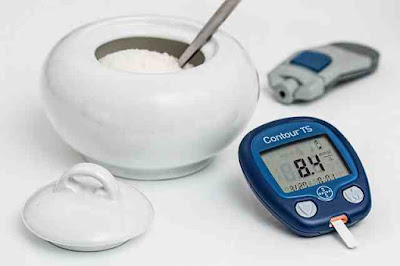Key points
- People with diabetes should balance their blood sugar otherwise because their pancreas does not release enough insulin or their insulin is inefficient.
- To test blood sugar levels in the home, you will need a lancing device, a new lancet, a test strip.
- A control solution will help ensure that the test strips and the blood sugar meter give accurate results.
The levels of glucose (sugar) in the blood increase
and decrease continuously throughout the day. People with diabetes have to
measure their blood sugar levels throughout the day, especially before eating
or exercising.
When you eat, blood sugar levels go up. When you
exercise, your blood sugar levels go down. In people without diabetes, the body
is equipped to deal with these changes. The pancreas is released:
- The insulin that helps the sugar enter the cells to be used as energy and stores additional sugar in the liver.
- glucagon that releases sugar from the liver to use when the blood sugar level is low.
People with diabetes should balance their blood
sugar because their pancreas does not release enough insulin or their insulin
is inefficient. They take insulin to better mimic the natural action of the
body's insulin, paying attention to meals and physical activity; and ensure
that blood sugar levels do not rise or fall too much.
Blood sugar meters
Since the 1980s, people with diabetes have been able
to control their blood sugar levels at home. The most common way to perform
home monitoring is with a blood sugar meter.
To measure blood sugar levels, meters need a drop of
blood from a finger prick. Some sugar meters will allow the drop of blood to
come from another place, such as the forearm or the toes. However, the most
accurate way to check blood sugar levels is by extracting blood from the
fingertips. A small drop of blood is applied to a test strip, which is inserted
into the blood sugar meter. When used correctly, the meter provides a quick
reading.
Choosing a blood
sugar meter
Many brands of blood sugar meters are available. When you
get a blood sugar meter, there are a number of factors to consider, such as:
- recommendations from your diabetes team
- size of the meter and whether it is easy to take to school or other places
- amount of blood needed to get a reliable test result
- features you may prefer to have (for example, pattern recognition, alerts, or dose calculations)
- whether the results can be downloaded to a computer
- visibility of the results.
Most blood sugar meters come as a kit. The kits typically
will include a lancing device, lancets, a few test strips, and a carrying case.
Extra lancets and test strips must be purchased separately.
Testing your blood
sugar levels at home
Testing blood sugar levels at home is fairly easy and
with practice, you and your child will soon become experts. You will need:
- the lancing device
- a new lancet
- a test strip.
You should wash their hands first and dry them well.
Insert the lancet into the lancet device and insert a test strip into the blood
sugar meter. Hold the device against one of your fingers and push the trigger
button. The lancet will quickly penetrate your skin.
Gently milk your finger from the base to the tip until a
drop of blood forms. Repeat until you have enough blood to blot the strip.
Place the blood drop onto the test strip and wait for the
results to appear on the meter screen. Be sure to record the reading into your logbook, and clean up any excess blood with a cotton swab.
Discard the used lancet into the sharps disposal
container.
It is important to rotate fingers to ensure that hard
skin does not develop on any one finger. This can make future testing painful.
Making sure the reading is accurate: checking and calibration
If you are concerned about the accuracy of the blood sugar meter, have your home results checked against laboratory results. Results of the home blood sugar meter test should be within 20 per cent of the lab test. For example, if the lab reading is 10 mmol/L, the meter result should be between 8 and 12 mmol/L. A member of your health-care team can make sure that your meter test and lab test fall within the same range.For most blood sugar meters you can purchase a control solution. It will help ensure that the test strips and blood sugar meter are giving accurate results.



0 Comments